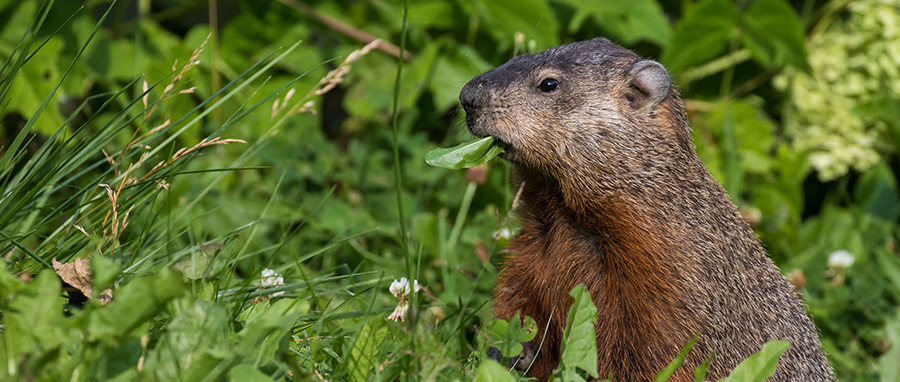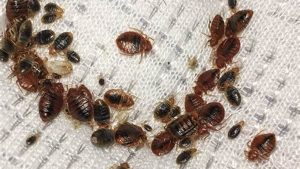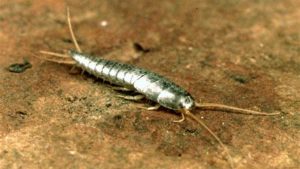As small, burrowing rodents, gophers play a crucial role in ecosystems by aerating soil and controlling vegetation. Understanding what attracts gophers is essential for managing their presence in gardens and landscapes.
Gophers are primarily attracted to food sources. They are herbivores that feed on roots, bulbs, and tubers. Common plants that attract gophers include alfalfa, clover, dandelions, and carrots. Understanding their dietary preferences helps in deterring them from desired areas.
The study of gopher behavior has provided valuable insights into their ecological significance and pest management strategies. Over the years, research has highlighted the importance of controlling gopher populations to prevent agricultural damage and landscape destruction. Today, we delve into the specific factors that attract gophers, exploring their preferences and providing practical advice for mitigating their presence.
What Attracts Gophers

Gophers are attracted to various factors in their environment, influencing their behavior and presence. Understanding these aspects is essential for managing gopher populations and mitigating their impact.
- Food sources
- Water availability
- Soil conditions
- Shelter
- Mating opportunities
- Temperature
- Vegetation cover
- Predator presence
- Human activity
These aspects are interconnected and play a role in attracting gophers to specific areas. For instance, food availability is a primary attractant, with gophers being drawn to gardens and landscapes with ample vegetation. Soil conditions, such as loose and well-drained soil, provide suitable burrowing grounds. Understanding these key aspects enables effective strategies for deterring gophers and managing their presence, contributing to the preservation of gardens, landscapes, and agricultural areas.
Food sources
Food sources play a primary role in attracting gophers to specific areas. Their herbivorous diet and preference for certain plants make them highly responsive to the availability of vegetation.
- Roots and bulbs
Gophers are particularly fond of the roots and bulbs of plants, including carrots, potatoes, and onions. These provide them with essential nutrients and energy. - Grasses and vegetation
Grasses and other types of vegetation offer a readily available food source for gophers. Lawns, fields, and gardens with lush vegetation are often attractive to these rodents. - Fruits and seeds
Gophers will also consume fruits and seeds when available. Fallen fruits from trees or shrubs, as well as bird feeders, can attract them. - Agricultural crops
Gophers can cause significant damage to agricultural crops, particularly those grown underground, such as potatoes, peanuts, and sugar beets.
Understanding the specific food sources that attract gophers is crucial for developing effective management strategies. By limiting their access to preferred vegetation and implementing deterrents, it is possible to reduce gopher presence and minimize their impact on gardens, landscapes, and agricultural areas.
Water availability
Water availability is another important factor that attracts gophers to specific areas. These rodents require access to water for survival and various physiological processes.
- Surface water
Gophers will seek out areas with surface water sources, such as ponds, streams, and irrigation canals. These provide them with a reliable source of water for drinking and bathing. - Soil moisture
Gophers can also obtain water from the moisture content of the soil. They prefer loose, well-drained soil that retains moisture, making it easier for them to dig burrows and access water. - Vegetation
Vegetation can also contribute to water availability for gophers. Plants absorb water from the soil and release it into the atmosphere through transpiration. This creates a humid environment that attracts gophers. - Human activity
Human activities, such as watering lawns and gardens, can also increase water availability for gophers. Excess water that seeps into the ground can create favorable conditions for these rodents.
Understanding the role of water availability in attracting gophers is essential for developing effective management strategies. By limiting their access to water sources and reducing soil moisture, it is possible to deter gophers and minimize their presence in undesirable areas.
Soil conditions
Soil conditions play a crucial role in attracting gophers to specific areas. These rodents have specific preferences for soil characteristics that influence their burrowing behavior, food availability, and overall survival.
Gophers prefer loose, well-drained soil that is easy to dig. This allows them to create extensive burrow systems with minimal effort. They are also attracted to soils with high organic matter content, which provides a rich source of nutrients for the plants they feed on. Additionally, gophers prefer soils with a neutral pH, as acidic or alkaline soils can be harmful to their health.
The relationship between soil conditions and what attracts gophers has significant practical applications. By understanding the soil preferences of these rodents, it is possible to develop targeted management strategies. For example, homeowners can amend their soil with organic matter and ensure proper drainage to make their gardens less attractive to gophers. Farmers can also implement soil management practices that reduce erosion and improve soil structure, making their fields less conducive to gopher infestations.
Shelter
Shelter is a crucial factor that attracts gophers to specific areas. These rodents rely on burrows and other forms of shelter for protection, nesting, and raising their young. Creating and maintaining suitable shelter is essential for their survival and well-being.
- Burrow Systems
Gophers are renowned for their extensive burrow systems, which can extend up to 200 feet in length and reach depths of 6 feet. These burrows provide shelter, protection from predators, and a stable environment for nesting and raising young. - Nest Chambers
Within their burrow systems, gophers create nest chambers that serve as their primary living quarters. These chambers are typically lined with soft materials such as grass, leaves, or fur and provide a warm and insulated environment for the gophers. - Vegetation Cover
Areas with dense vegetation cover can provide shelter and camouflage for gophers. Tall grasses, shrubs, and trees offer protection from predators and create a favorable microclimate that attracts these rodents. - Artificial Structures
In some cases, gophers may utilize artificial structures, such as abandoned pipes, culverts, or even human-made structures, for shelter. These structures provide protection from the elements and predators, making them attractive to gophers in areas where natural shelter is scarce.
Understanding the importance of shelter in the context of what attracts gophers allows for the development of effective management strategies. By modifying the environment to reduce or eliminate suitable shelter, it is possible to deter gophers from inhabiting specific areas. Additionally, providing alternative shelter options, such as predator-proof nesting boxes, can help mitigate the impact of gophers on agricultural or residential landscapes.
Mating opportunities
Mating opportunities play a significant role in attracting gophers to specific areas. These rodents have specific habitat requirements and social behaviors that influence their reproductive success and overall population dynamics. Understanding the factors that contribute to suitable mating opportunities is essential for effective gopher management.
- Population Density
Gophers are more likely to be attracted to areas with higher population densities, which increase the chances of encountering potential mates. Dense populations provide more opportunities for courtship, breeding, and establishing territories. - Habitat Suitability
Suitable habitat conditions, such as the availability of food, water, and shelter, are essential for gopher reproduction. Areas with abundant vegetation and nesting sites provide a favorable environment for gophers to establish burrows and raise their young. - Absence of Predators
Gophers are preyed upon by various predators, including owls, hawks, coyotes, and snakes. Areas with low predator presence or effective predator deterrence measures can provide safer environments for gophers to breed and raise their young. - Presence of Pheromones
Gophers rely on pheromones for communication, including attracting mates. The presence of pheromones in an area can signal to potential mates that there are suitable breeding opportunities.
By considering the aspects of mating opportunities that attract gophers, it is possible to develop targeted management strategies. For example, reducing population density through trapping or habitat modification can limit the availability of mates and discourage gophers from establishing breeding populations. Additionally, creating less favorable habitat conditions, such as removing dense vegetation or providing predator perches, can make an area less attractive for gopher reproduction. Understanding these factors provides valuable insights into the behavioral ecology of gophers and contributes to effective pest management practices.
Temperature
Temperature plays a crucial role in influencing gopher behavior and distribution. These rodents are adapted to specific temperature ranges and seek environments that provide optimal conditions for their survival and reproduction. Understanding the relationship between temperature and what attracts gophers is essential for effective management strategies.
Gophers are ectothermic, meaning they rely on external heat sources to regulate their body temperature. They prefer warm, well-drained soils that offer thermal stability and allow for efficient burrowing. During cold weather, gophers may seek shelter in deeper burrows or under structures to escape freezing temperatures. Conversely, in hot weather, they may dig shallower burrows or retreat to cooler areas to avoid overheating.
Temperature also affects gopher activity patterns. They are typically more active during the cooler morning and evening hours, when temperatures are more favorable. During extreme heat or cold, gophers may reduce their activity levels or enter a state of torpor to conserve energy.
Understanding the influence of temperature on gopher behavior can guide management efforts. For example, targeting gopher control measures during periods of optimal activity can increase their effectiveness. Additionally, modifying the environment to create less favorable temperature conditions, such as planting dense vegetation or providing shade, can deter gophers from inhabiting specific areas.
Vegetation cover
Vegetation cover plays a significant role in attracting gophers to specific areas. Gophers rely on vegetation for food, shelter, and protection from predators. The presence of dense vegetation can create a favorable environment for gophers to establish burrows, raise their young, and forage for food.
Gophers are herbivores, and their diet consists primarily of roots, bulbs, and tubers of plants. Areas with abundant vegetation, such as meadows, grasslands, and gardens, provide a rich food source for gophers. Vegetation also provides shelter and protection from predators. Dense vegetation can obstruct the view of predators, making it more difficult for them to spot and capture gophers. Additionally, vegetation can provide insulation, helping gophers maintain a stable body temperature during extreme weather conditions.
Understanding the connection between vegetation cover and what attracts gophers has practical applications in gopher management. By modifying vegetation cover, it is possible to make an area less attractive to gophers. For example, removing dense vegetation around gardens or agricultural fields can reduce the availability of food and shelter for gophers, discouraging them from inhabiting those areas. Conversely, planting dense vegetation can create a barrier or deterrent, preventing gophers from entering specific areas.
In summary, vegetation cover is a critical component of what attracts gophers. Gophers are drawn to areas with abundant vegetation for food, shelter, and protection. By understanding this relationship, it is possible to develop effective gopher management strategies that focus on modifying vegetation cover to make an area less attractive to these rodents.
Predator presence
Predator presence is a critical component of what attracts gophers. Gophers are preyed upon by a variety of predators, including owls, hawks, coyotes, and snakes. The presence of predators can deter gophers from inhabiting areas where they are at risk of being hunted.
In areas with high predator presence, gophers may be forced to modify their behavior to avoid detection. For example, they may become more nocturnal, spending the daylight hours in their burrows to avoid predators that are active during the day. They may also be more selective in their choice of food, avoiding plants that are located in open areas where they are more exposed to predators.
The relationship between predator presence and what attracts gophers has practical applications in gopher management. By understanding the role that predators play in deterring gophers, it is possible to develop management strategies that focus on attracting or encouraging predators to an area. For example, providing nesting boxes for owls or perches for hawks can help to increase predator presence in an area, which can in turn reduce the population of gophers.
In summary, predator presence is a critical component of what attracts gophers. Gophers are preyed upon by a variety of predators, and their presence can deter gophers from inhabiting areas where they are at risk of being hunted. By understanding this relationship, it is possible to develop effective gopher management strategies that focus on attracting or encouraging predators to an area.
Human activity
Human activity can significantly influence gopher behavior and distribution. Understanding this relationship is crucial for developing effective gopher management strategies and mitigating their impact on human environments.
One of the primary ways human activity attracts gophers is through the modification of the environment. Gophers are attracted to areas with abundant food, water, and shelter. Human activities such as agriculture, landscaping, and urbanization can create these favorable conditions for gophers. For example, agricultural practices that involve the cultivation of crops provide a readily available food source for gophers. Similarly, landscaping practices that incorporate dense vegetation or create water features can make an area more attractive to gophers by providing shelter and water.
Another way human activity can attract gophers is through the provision of artificial structures. Gophers may utilize abandoned pipes, culverts, or even human-made structures for shelter and nesting. These structures provide protection from predators and the elements, making them attractive to gophers in areas where natural shelter is scarce. Additionally, human activities that generate food waste or garbage can attract gophers by providing an easily accessible food source.
Understanding the connection between human activity and what attracts gophers has practical applications in various fields. For example, in agriculture, farmers can implement land management practices that reduce the availability of food and shelter for gophers, making their fields less attractive to these rodents. In urban areas, homeowners can modify their landscaping to make their properties less conducive to gopher habitation. Additionally, proper waste management practices can help reduce the availability of food sources for gophers, deterring them from entering human environments.
Frequently Asked Questions
The following FAQs address common questions and clarify aspects related to “what attracts gophers.” They provide valuable insights to help you better understand the factors that influence gopher behavior and presence.
Question 1: What types of vegetation attract gophers?
Answer: Gophers are attracted to areas with lush vegetation, particularly plants with fleshy roots, bulbs, or tubers. This includes vegetables such as carrots, potatoes, and onions, as well as grasses and clover.
Question 2: Do gophers prefer moist soil?
Answer: Yes, gophers prefer loose, well-drained soil that retains moisture. This type of soil allows them to dig burrows easily and provides a favorable environment for their survival.
Question 3: Are gophers attracted to human settlements?
Answer: Gophers are adaptable rodents and may be attracted to human settlements if they find suitable food, water, and shelter. Gardens, lawns, and agricultural fields can provide these resources, making them attractive to gophers.
Question 4: What are some natural predators of gophers?
Answer: Gophers are preyed upon by various predators, including owls, hawks, coyotes, and snakes. The presence of these predators can deter gophers from inhabiting areas where they are at risk of being hunted.
Question 5: Can gophers damage electrical wiring?
Answer: Yes, gophers can damage electrical wiring if their burrowing activities bring them into contact with underground cables. This can pose safety hazards and disrupt electrical systems.
Question 6: Are there humane ways to deter gophers?
Answer: Yes, there are humane methods to deter gophers, such as using repellents, modifying the environment to make it less attractive, or installing physical barriers. Trapping and relocation should be considered as a last resort.
These FAQs provide a foundation for understanding the factors that attract gophers. In the next section, we will explore practical strategies for managing gopher populations and mitigating their impact.
Tips to Mitigate Gopher Presence
Understanding what attracts gophers is crucial for developing effective management strategies. The following tips provide practical actions you can take to deter gophers and minimize their impact on your property.
Tip 1: Remove Food Sources
Eliminate potential food sources by removing weeds, excess vegetation, and fallen fruits around your property. Keep compost piles enclosed and properly manage garbage to prevent attracting gophers.
Tip 2: Modify Soil Conditions
Gophers prefer loose, moist soil. Amend your soil with organic matter to improve drainage and make it less conducive to burrowing. Avoid overwatering, as excessive moisture can attract gophers.
Tip 3: Create Physical Barriers
Install physical barriers, such as wire mesh fencing or buried chicken wire, around gardens and other areas you want to protect. This prevents gophers from digging into these areas.
Tip 4: Use Natural Repellents
Plant gopher-repellent plants around your property, such as marigolds, castor beans, or peppermint. These plants release scents that deter gophers.
Tip 5: Attract Predators
Encourage natural predators of gophers, such as owls, hawks, and snakes, to your property by providing nesting boxes, perches, and a water source.
Tip 6: Use Traps
Trapping can be an effective way to remove gophers from your property. Use live traps to avoid harming the animals and relocate them to a suitable habitat.
Tip 7: Seek Professional Help
If you are unable to manage the gopher population on your own, consider seeking assistance from a professional pest control company. They have specialized knowledge and tools to effectively address gopher infestations.
Implementing these tips can significantly reduce gopher presence and protect your property from their damaging effects. By understanding what attracts gophers and taking proactive measures to deter them, you can maintain a healthy and gopher-free environment.
The next section will delve into the broader implications of gopher presence and explore strategies for managing their impact on ecosystems and agricultural practices.
Conclusion
In exploring “what attracts gophers,” we uncovered the significant role of food sources, soil conditions, and the presence of shelter. Gophers are drawn to areas with abundant vegetation, particularly those with fleshy roots and tubers. They prefer loose, well-drained soil that is easy to dig and provides moisture. Additionally, gophers seek shelter in burrows, under structures, and in areas with dense vegetation, as these provide protection from predators and the elements.
Understanding these factors is crucial for developing effective gopher management strategies. By removing or modifying food sources, altering soil conditions to make them less favorable, and eliminating potential shelter sites, we can deter gophers from inhabiting specific areas. Additionally, encouraging natural predators and implementing physical barriers can further mitigate gopher presence.


